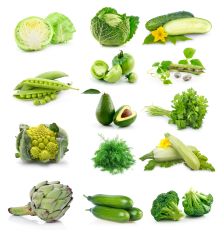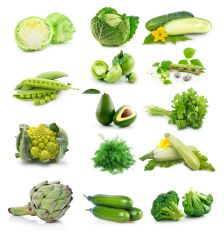The Healthiest Leafy Greens
We have constantly been advised to eat green leafy vegetables. They’re rich in essential vitamins and minerals, we’re told. However, not all leafy greens are made equal. If you think the lettuce leaves in your burger are doing you any favours while the basil leaves on your pizza are only garnish, think again. Nutritional experts have sorted out which leafy greens are the most nutritious and exactly what kind of benefits we can get from regularly eating them.
Microgreens
Ranking high among experts’ lists of the most health-giving greens are microgreens. What are microgreens exactly? As you might have guess, they’re green vegetables that are tiny in size, at least 2.5 to 7.5 cm tall. These plants can be sprouts or baby greens, but unlike sprouts, only their stems and leaves are edible. Some examples of microgreens include broccoli, watercress, radish, arugula, leek, fennel, dill, chicory and coriander. According to agricultural studies, certain microgreens contain six to up to 40 times more vitamins C and E than mature plants. This is because during the crucial developmental stage, these baby plants require more vitamins, minerals and antioxidants to support their growth.
Kale
Everybody’s favourite leafy superfood is a superfood for a good reason. Kale is particularly rich in lutein, a powerful antioxidant that benefits eyesight. Kale also packs terrific amounts of beta-carotene, vitamin C, and sulforphane, which is a cancer-fighting phytonutrient. One cup or 67 grams of raw kale contains 684% of the Daily Value (DV) for vitamin K, 206% of the DV for vitamin A and 134% of the DV for vitamin C. Kale is best consumed raw since it will lose some of its nutritional value when cooked. 
Spinach
Cartoon character Popeye was right to choose spinach as his go-to vegetable for extra strength. Spinach has been found to have the highest amount of the B vitamin folate among greens, which means this can help against breast cancer development. It’s also rich in iron and potassium, a great benefit for people needing to keep their blood pressure in check.
Swiss Chard
Vitamin K is heavily present in swiss chard, three times more than other greens. Vitamin K is essential in helping the blood clot, preventing excessive bleeding. Researches have also discovered that vitamin K can lower the risk of type 2 diabetes.
Collard Greens
Collard greens are loose leaf greens similar in texture to kale and cabbage. They’re great sources of vitamins A, B9 or folate, and C. They’re also one of the most vitamin K-rich greens with one cup or 190 grams packing 1,045 percent of the daily value for vitamin K.
Cabbage
Coming in green, white or purple colours, cabbages are similar to kale and broccoli. Among cabbage’s many health benefits is protection against cancers like lung and esophageal. Cabbage is also often fermented into sauerkraut or kimchi and fermented foods are even more beneficial with the ability to improve your digestion and immune system.
Iceberg lettuce
Commonly found in burgers, sandwiches, salads and tacos, iceberg lettuce is actually one of the least nutritious greens. Compared to darker leafy greens, they’re mostly made of water and are not as rich in vitamins, minerals and antioxidants. It does make for a great low-calorie addition to the aforementioned dishes, though.
For further information on growing Leafy Greens in your own garden, check out this post.
Sources:
https://www.shape.com/healthy-eating/diet-tips/10-best-leafy-greens
https://www.healthline.com/nutrition/leafy-green-vegetables#section15
https://www.independent.co.uk/life-style/not-all-leafy-greens-are-created-equal-heres-the-definitive-ranking-of-the-best-ones-for-you-a6981056.html
https://www.healthline.com/nutrition/microgreens#nutrition





